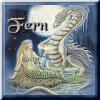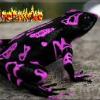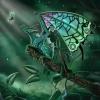Some things I do, regardless of which invisible fence Im using:
Mark the exhibit interior with fresh water terrain, and surround it with snow terrain if needed for visibility, then put one tile of snow terrain inside the exhibit area, because fences will not put a gate adjacent to water terrain unless there is no solid terrain for the gate, so one tile of solid terrain inside the exhibit insures that my gate goes exactly where I want it to.
Then I make sure the fence footprint is on the inside of the exhibit by putting the footprint where it needs to be, then moving the cursor a little until I see that the dot is in the right place, then hold down the mouse button and run the fence around a corner.
I repeat that process around all corners of the exhibit.
I start the fence on one side of where I want the gate to be, and end it on the other side of where I want the gate to be, then use the low rock exhibit fence for the gate so I can actually see it.
When using guide fences, I do it the same way, then replace the guide fence with the invisible fence with the footprint on the inside of the exhibit, and leave my low rock exhibit gate in place.
Hmmm.... I may make a tutorial :D



